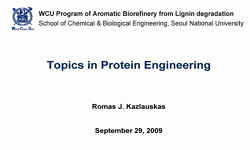Because of the harsh environment around city subways and the typically poor geological conditions, it is often difficult to ensure the stability of a tunnel, which makes it prone to collapses and other accidents. The influence of multiple factors on t...
http://chineseinput.net/에서 pinyin(병음)방식으로 중국어를 변환할 수 있습니다.
변환된 중국어를 복사하여 사용하시면 됩니다.
- 中文 을 입력하시려면 zhongwen을 입력하시고 space를누르시면됩니다.
- 北京 을 입력하시려면 beijing을 입력하시고 space를 누르시면 됩니다.



A Case Study on the Construction Optimization Decision Scheme of Urban Subway Tunnel Based on the TOPSIS Method
한글로보기https://www.riss.kr/link?id=A107097090
-
저자
Bo Wu (Guangxi University) ; Ming Lu (Guangxi University) ; Wei Huang (Guangxi University) ; Yangbing Lan (Guangxi University) ; Yufang Wu (Guangxi University) ; Zonghui Huang (Guangxi University)
- 발행기관
- 학술지명
- 권호사항
-
발행연도
2020
-
작성언어
English
- 주제어
-
등재정보
KCI등재,SCIE,SCOPUS
-
자료형태
학술저널
-
수록면
3488-3500(13쪽)
-
KCI 피인용횟수
0
- DOI식별코드
- 제공처
-
0
상세조회 -
0
다운로드
부가정보
다국어 초록 (Multilingual Abstract)
Because of the harsh environment around city subways and the typically poor geological conditions, it is often difficult to ensure the stability of a tunnel, which makes it prone to collapses and other accidents. The influence of multiple factors on tunnel stability was analyzed under the same geological conditions and environmental factors by using a three-dimensional numerical simulation. Taking into account the objective environment and manual operation and other factors, construction sequence, support closure time, and reinforcement area and parameters were chosen as the main factors affecting the tunnel stability. Finally, based on ground deformation, tunnel convergence deformation, and surrounding soil stress as evaluation indicators, a fuzzy analytic hierarchy process (FAHP)-gray correlation degree-technique for order performance by similarity to ideal solution (TOPSIS) model was established. It was found that the higher the relative closeness of the construction parameter combination, the greater the tunnel stability. The best combination of construction parameters was applied to the Tiantongyuan Station project of Beijing Metro Line 17. All geological conditions being equal, reasonable selection of construction parameters can ensure optimal tunnel construction stability, reduce construction risks, and support sustainable tunnel development. In addition, the FAHP-gray correlation degree-TOPSIS method achieved multi-index evaluation of tunnel stability, which provides practical guidance for the construction of similar projects.
참고문헌 (Reference)
1 Zhao LH, "Three-dimensional stability analysis of a longitudinally inclined shallow tunnel face" 87 : 32-48, 2017
2 Li ZY, "Study on stability of surrounding rock of shallow-buried tunnel based on gray correlation analysis" 17 (17): 2079-2082, 2017
3 Wang X, "Stability investigations around a mine tunnel through three-dimensional discontinuum and continuum stress analyses" 32 : 98-112, 2012
4 Fang Q, "Shallow tunnelling method(STM)for subway station construction in soft ground" 29 : 10-30, 2012
5 Tajvidi AsrE, "Selection of optimum tunnel support system using aggregated ranking of SAW TOPSIS and LA methods" 5 (5): 49-63, 2015
6 Wang HT, "Roof collapse mechanisms for a shallow tunnel in two-layer rock strata incorporatingthe influence of groundwater" 98 : 215-227, 2019
7 Zhang P, "Risk assessment system for oil and gas pipelines laid in one ditch based on quantitative risk analysis" 12 (12): 981-, 2019
8 Hyun KC, "Risk analysis using fault-tree analysis(FTA)and analytic hierarchy process(AHP)applicable to shield TBM tunnels" 49 : 121-129, 2015
9 Nezarat H, "Ranking of geological risks in mechanized tunneling by using fuzzy analytical hierarchy process(FAHP)" 50 : 358-364, 2015
10 He BJ, "Promoting and implementing urban sustainability in China : An integration of sustainable initiatives at different urban scales" 82 : 83-93, 2018
1 Zhao LH, "Three-dimensional stability analysis of a longitudinally inclined shallow tunnel face" 87 : 32-48, 2017
2 Li ZY, "Study on stability of surrounding rock of shallow-buried tunnel based on gray correlation analysis" 17 (17): 2079-2082, 2017
3 Wang X, "Stability investigations around a mine tunnel through three-dimensional discontinuum and continuum stress analyses" 32 : 98-112, 2012
4 Fang Q, "Shallow tunnelling method(STM)for subway station construction in soft ground" 29 : 10-30, 2012
5 Tajvidi AsrE, "Selection of optimum tunnel support system using aggregated ranking of SAW TOPSIS and LA methods" 5 (5): 49-63, 2015
6 Wang HT, "Roof collapse mechanisms for a shallow tunnel in two-layer rock strata incorporatingthe influence of groundwater" 98 : 215-227, 2019
7 Zhang P, "Risk assessment system for oil and gas pipelines laid in one ditch based on quantitative risk analysis" 12 (12): 981-, 2019
8 Hyun KC, "Risk analysis using fault-tree analysis(FTA)and analytic hierarchy process(AHP)applicable to shield TBM tunnels" 49 : 121-129, 2015
9 Nezarat H, "Ranking of geological risks in mechanized tunneling by using fuzzy analytical hierarchy process(FAHP)" 50 : 358-364, 2015
10 He BJ, "Promoting and implementing urban sustainability in China : An integration of sustainable initiatives at different urban scales" 82 : 83-93, 2018
11 Zhang P, "Optimal maintenance decision method for urban gas pipelines based on as low as reasonably practicable principle" 11 (11): 153-, 2019
12 Zhang WG, "Influence of groundwater drawdown on excavation responsese a case history in Bukit Timah granitic residual soils" 10 (10): 856-864, 2018
13 Xu JC, "Gray correlation-hierarchical analysis for metro-caused settlement" 64 : 1249-1256, 2011
14 Liu HY, "Full 3D modelling for effects of tunnelling on existing support systems in the Sydney region" 23 (23): 399-420, 2008
15 Azarnivand A, "Extended fuzzy analytic hierarchy process approach in water and environmentalmanagement(case study : Lake Urmia Basin, Iran)" 73 : 13-26, 2015
16 Liu HY, "Effects of tunnelling on existing support systems of perpendicularly crossing tunnel" 36 (36): 880-894, 2009
17 Lee IM, "Effect of seepage force on tunnel face stability reinforced with multi-step pipe grouting" 19 (19): 551-565, 2004
18 Yan X, "Effect of rock mass and discontinuity mechanical properties and delayed rock supporting on tunnel stability in an underground mine" 238 : 62-57, 2018
19 Li PF, "Displacement characteristics of high-speed railway tunnel construction in loess ground by using multi-step excavation method" 51 : 41-55, 2016
20 Sharifzadeh M, "Design of sequential excavation method for large span urban tunnels in soft ground – Niayesh tunnel" 35 : 178-188, 2013
21 Lou YB, "Deformation and mechanical model of temporary support sidewall in tunnel cutting partial section" 61 : 40-49, 2017
22 Yanbin Luo, "Deformation Rule and Mechanical Characteristics of Temporary Support in Soil Tunnel Constructed by Sequential Excavation Method" 대한토목학회 21 (21): 2439-2449, 2017
23 Southcn.com, "Bulletin of the “2·7” permeable and collapse accidentof Foshan Metro Line 2"
24 Karakus M, "Back analysis for tunnelling induced ground movements and stress redistribution" 20 (20): 514-524, 2005
25 Satıcı Ö, "Assessment of tunnel portal stability at jointed rock mass : A comparative case study" 64 : 72-82, 2015
26 Xue YG, "Analysis of factors influencing tunnel deformation in loess deposits by data mining : A deformation prediction model" 232 : 94-103, 2018
27 Azadeh A, "An integrated fuzzy analytic hierarchy process and fuzzy multiple-criteria decision-making simulation approach for maintenance policy selection" 92 (92): 3-18, 2016
28 Zhan K, "An improved TOPSIS based on GRA applied to optimal solar fracrion for swhs" 37 : 1218-1226, 2016
29 Azadeh AS, "A unique fuzzy multi-criteria decision making: Computer simulation approach for productive operators’ assignment in cellular manufacturing systems with uncertainty and vagueness" 56 (56): 329-343, 2011
30 Golestanifar M, "A multi-dimensional approach to the assessment of tunnel construction sequences" 48 (48): 1077-1085, 2011
31 Sun W, "A decision-making method for Sponge City design based on gray correlation degree and TOPSIS method" 21 (21): 1031-1042, 2018
동일학술지(권/호) 다른 논문
-
Study on Bond-Slip Behaviors of Self-Stressing Steel Slag Concrete-Filled Steel Tube
- 대한토목학회
- Feng Yu
- 2020
- KCI등재,SCIE,SCOPUS
-
- 대한토목학회
- 김경기
- 2020
- KCI등재,SCIE,SCOPUS
-
- 대한토목학회
- Cheng Luo
- 2020
- KCI등재,SCIE,SCOPUS
-
Study of Scour and Flow Patterns around Triangular-Shaped Spur Dikes
- 대한토목학회
- Mohammad Bahrami-Yarahmadi
- 2020
- KCI등재,SCIE,SCOPUS
분석정보
인용정보 인용지수 설명보기
학술지 이력
| 연월일 | 이력구분 | 이력상세 | 등재구분 |
|---|---|---|---|
| 2023 | 평가예정 | 해외DB학술지평가 신청대상 (해외등재 학술지 평가) | |
| 2020-01-01 | 평가 | 등재학술지 유지 (해외등재 학술지 평가) |  |
| 2010-01-01 | 평가 | 등재학술지 유지 (등재유지) |  |
| 2008-01-01 | 평가 | 등재학술지 유지 (등재유지) |  |
| 2005-05-27 | 학술지명변경 | 한글명 : 대한토목학회 영문논문집 -> KSCE Journal of Civil Engineering |  |
| 2005-01-01 | 평가 | 등재학술지 선정 (등재후보2차) |  |
| 2004-01-01 | 평가 | 등재후보 1차 PASS (등재후보1차) |  |
| 2002-01-01 | 평가 | 등재후보학술지 선정 (신규평가) |  |
학술지 인용정보
| 기준연도 | WOS-KCI 통합IF(2년) | KCIF(2년) | KCIF(3년) |
|---|---|---|---|
| 2016 | 0.59 | 0.12 | 0.49 |
| KCIF(4년) | KCIF(5년) | 중심성지수(3년) | 즉시성지수 |
| 0.42 | 0.39 | 0.286 | 0.06 |




 KCI
KCI






